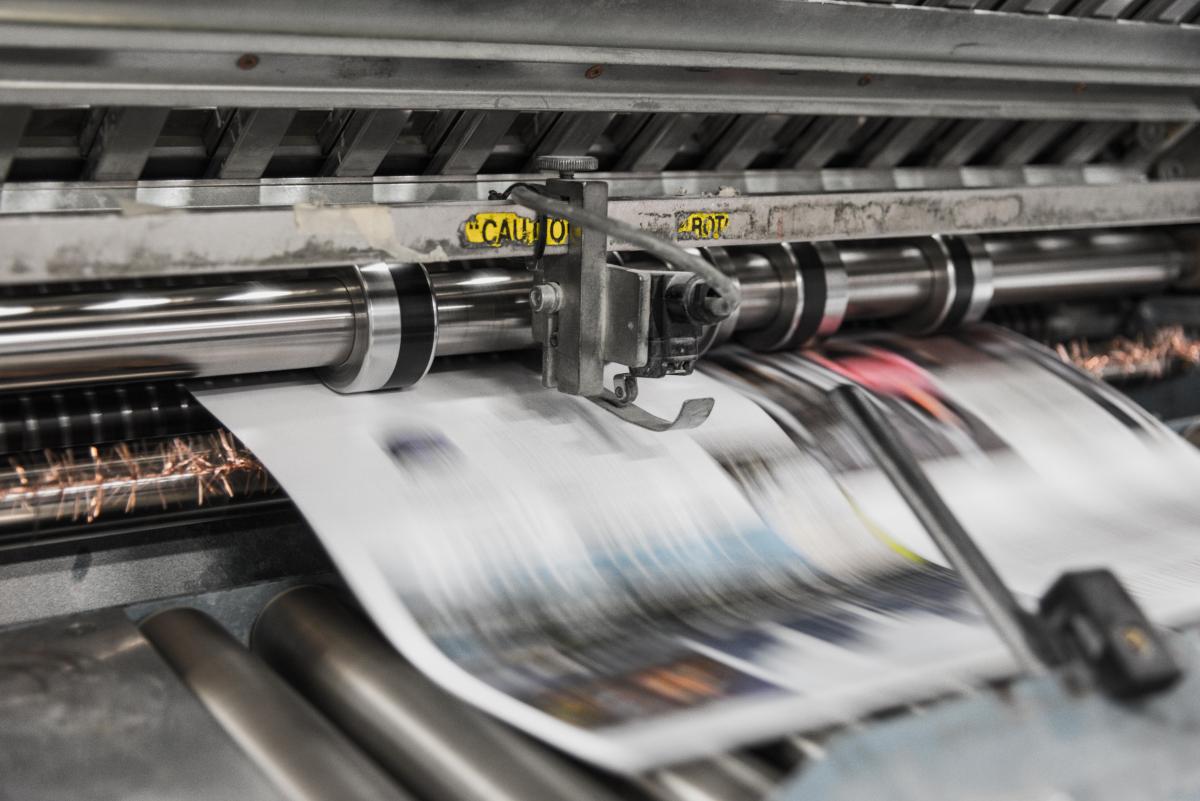The future of the printing industry holds exciting possibilities as it embraces technological advancements and sustainable practices. With the advent of digital transformation, the printing industry is undergoing a significant evolution. This article delves into the emerging trends and innovations shaping the future of printing industry, highlighting how these changes will impact businesses and consumers alike.

The Current State of the Printing Industry
Today, the printing industry is a robust and dynamic sector that continues to adapt to new demands and technologies. Traditionally reliant on offset printing, the industry is now shifting towards digital solutions. This transition is driven by the need for faster turnaround times, cost-effectiveness, and customization.
Shift from Traditional to Digital Printing
The migration from traditional to digital printing is one of the most significant changes in the industry. Digital printing offers numerous advantages, including reduced waste, lower costs, and the ability to print on demand. As a result, businesses can personalize products and reduce inventory, responding more quickly to market changes.
To learn more about the differences between traditional and modern printing methods, visit traditional vs modern printing.
Technological Innovations Transforming Printing
Artificial Intelligence in Printing
Artificial Intelligence (AI) is revolutionizing the printing industry by enhancing the efficiency and accuracy of printing processes. AI-driven solutions can automate tasks, optimize print quality, and provide predictive maintenance. This leads to increased productivity and reduced operational costs.
Explore more about AI’s impact on printing technology at AI in printing.
3D Printing: The New Frontier
3D printing, also known as additive manufacturing, is opening up new possibilities for the printing industry. From creating prototypes to manufacturing intricate parts, 3D printing is transforming industries such as healthcare, automotive, and aerospace. This technology allows for rapid prototyping and customization, offering businesses a competitive edge.
Sustainability in the Printing Industry
Eco-Friendly Printing Practices
As environmental concerns grow, the printing industry is embracing sustainable printing practices. By using eco-friendly inks and recycled materials, companies are reducing their carbon footprint. This shift not only benefits the environment but also appeals to environmentally conscious consumers.
For insights on sustainable materials in printing, check out sustainable materials.
Reducing Waste and Energy Consumption
In addition to using sustainable materials, the industry is also focusing on reducing waste and energy consumption. Innovations such as energy-efficient printers and waste reduction technologies are becoming more prevalent, helping companies cut costs and contribute to environmental conservation.
The Impact of Printing on Various Industries
Publishing and Print Media
The publishing industry has been significantly impacted by digital printing technologies. With the ability to print on demand, publishers can reduce excess inventory and reach markets more efficiently. This shift has also enabled self-publishing, giving authors more control over their work.
Discover how offset printing has influenced publishing at offset printing in publishing.
Advertising and Marketing
Print media remains a powerful tool in advertising and marketing. With advancements in printing technology, companies can create eye-catching promotional materials with dynamic visuals and personalized content. This enables businesses to better engage with their target audience and enhance brand recognition.
Healthcare and Medical Devices
In the healthcare sector, printing technologies are being used to produce medical devices and customize patient care. From 3D-printed prosthetics to personalized medication packaging, the possibilities are vast and hold the potential to improve patient outcomes significantly.
Challenges Facing the Printing Industry
Adapting to Digital Transformation
While the transition to digital printing offers numerous benefits, it also presents challenges. Companies must invest in new technologies and train their workforce to adapt to digital processes. This requires a strategic approach to ensure a smooth transition and maintain competitiveness.
Sustainability and Environmental Concerns
As the industry moves towards sustainability, balancing cost and environmental responsibility remains a challenge. Companies must find ways to implement eco-friendly practices without compromising profitability. This requires innovation and collaboration across the supply chain.
The Future Outlook for the Printing Industry
Emerging Markets and Opportunities
The future of the printing industry is bright, with emerging markets presenting new opportunities for growth. As technological advancements continue, businesses can tap into new markets and expand their reach. This includes exploring new applications for printing technology in various sectors.
Continuous Innovation and Adaptation
To thrive in the future, printing companies must prioritize innovation and adaptation. By staying ahead of technological trends and consumer demands, businesses can maintain their competitive edge and capture new opportunities.
Conclusion
The future of the printing industry is filled with promise as it embraces new technologies and sustainable practices. By adapting to digital transformation and prioritizing eco-friendly initiatives, the industry can continue to grow and evolve. As businesses explore new opportunities and applications, the printing industry will remain a vital part of the global economy.

FAQs
What are the emerging trends in the printing industry?
Emerging trends include the shift to digital printing, the use of AI, and the adoption of sustainable practices.
How is 3D printing influencing the industry?
3D printing is transforming manufacturing processes by enabling rapid prototyping and customization in various industries.
Why is sustainability important in printing?
Sustainability is crucial for reducing environmental impact and appealing to eco-conscious consumers, driving innovation in the industry.
For more insights on the latest trends, visit latest trends in printing.
This article contains affiliate links. We may earn a commission at no extra cost to you.






